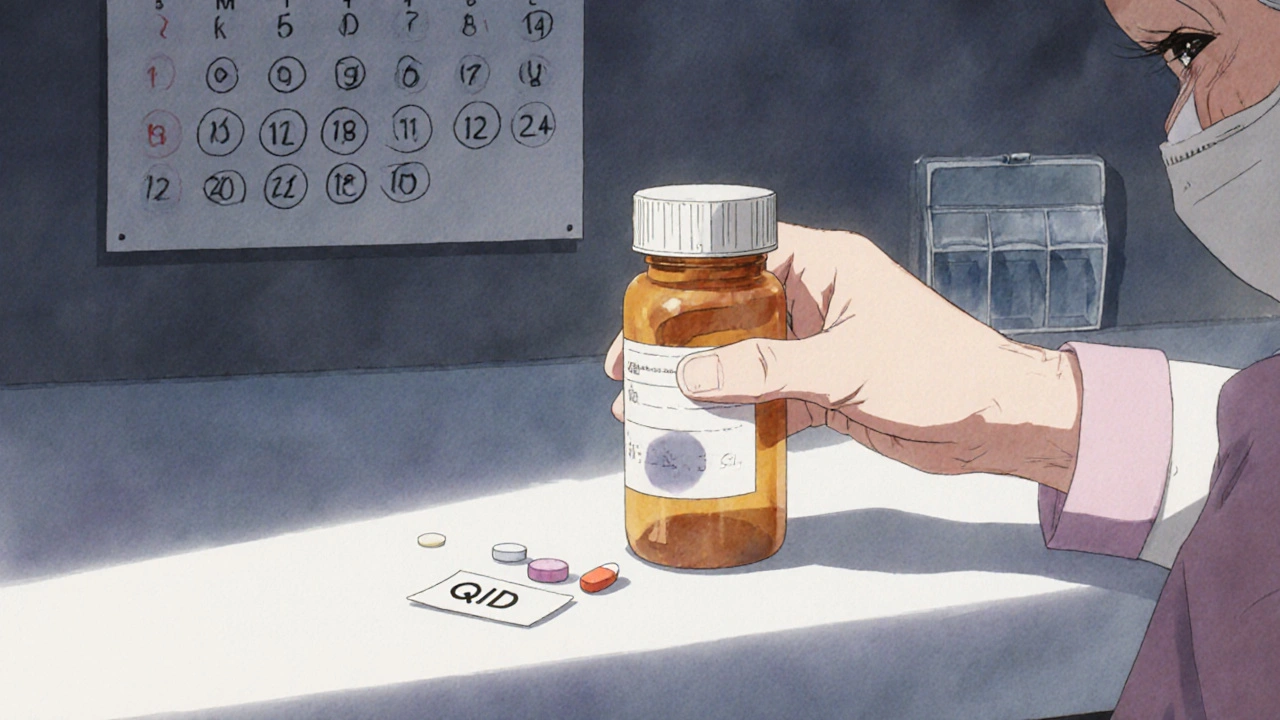QD vs QID: Understanding Medication Dosage Schedules
When you see QD, short for "quaque die," meaning once daily. Also known as once a day, it’s one of the most common instructions on prescriptions. And when you see QID, short for "quater in die," meaning four times daily. Also known as four times a day, it tells you to space doses evenly across your waking hours. These aren’t just Latin leftovers—they’re critical for how well your medicine works. Get them wrong, and you might not get the full benefit, or worse, you could risk side effects or even treatment failure.
Doctors pick QD or QID based on how your body handles the drug. Some meds, like blood pressure pills or statins, work best with one daily dose because they stay active in your system for 24 hours. Others, like certain antibiotics or pain relievers, need to be taken four times a day to keep a steady level in your blood. If you take an antibiotic only twice instead of four times, you might not kill all the bacteria—and that’s how resistant strains start. It’s not about being lazy or forgetting. It’s about chemistry. Your body breaks down drugs at a set rate, and dosing schedules are designed to match that rhythm.
QD doesn’t always mean morning. Some meds are better taken at night—like cholesterol drugs or certain sleep aids. QID doesn’t mean you have to wake up at 2 a.m. Most doctors expect you to take those doses during your waking hours, like with meals or before bed. If your schedule doesn’t fit, talk to your pharmacist. There’s often flexibility. You might be able to space QID doses as 8 a.m., 2 p.m., 8 p.m., and midnight, or even 7 a.m., 1 p.m., 7 p.m., and 1 a.m. if you sleep through the night. The goal is consistency, not perfection.
What you’ll find below are real stories and practical guides from people who’ve dealt with these dosing schedules firsthand. From managing antibiotics for infections to balancing multiple daily pills for chronic conditions, these posts cut through the confusion. You’ll see how QD and QID play out in real life—with insulin, pain meds, antibiotics, and more. No jargon. No fluff. Just clear, usable advice on how to stay on track, avoid mistakes, and make your treatment work for your life—not the other way around.

QD vs. QID: How Prescription Confusion Leads to Dangerous Medication Errors and How to Stop It
QD and QID are dangerous prescription abbreviations that cause deadly medication errors. Learn how mixing up once daily and four times daily leads to overdoses-and what you and healthcare providers can do to stop it.
